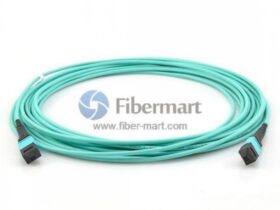The skyward reach of modern architecture conceals an engineering challenge that has persistently troubled the construction industry for decades, how to effectively join reinforcing steel bars to create continuous structural elements that maintain integrity under extreme conditions. Traditional lap splicing methods, where bars overlap and are tied together, consume excessive material and create congestion within concrete forms. This congestion complicates the concrete pouring process and leads to structural weaknesses from inadequate concrete consolidation. With the growth of buildings and infrastructure requirements, engineers have developed innovative solutions to save materials and enhance structural performance.
Evolution beyond overlap
The transition from simple lap splices to engineered mechanical connections represents one of the most significant advancements in reinforced concrete construction. These mechanical systems create connections that can achieve 100% of the bar’s tensile strength while requiring considerably less material than traditional methods.
Modern mechanical splices utilize various joining principles, including threaded connections, swaged sleeves, and grouted systems. Each approach offers distinct advantages for specific applications, from seismic zones requiring ductile connections to marine environments demanding corrosion resistance. Developing these specialized systems has allowed engineers to design structures that withstand extreme events like earthquakes, where traditional splices might fail under cyclic loading conditions.
Performance in extreme conditions
The actual test of splicing innovation comes under extreme loading scenarios where the difference between structural failure and resilience often hinges on connection performance. Modern splice systems undergo rigorous testing that simulates severe conditions, including:
- Cyclic loading simulations that replicate seismic events, subjecting connections to thousands of stress reversals that would cause conventional splices to deteriorate
- High-temperature exposure testing that evaluates performance during fire events, where traditional connections might lose capacity as temperatures rise
- Fatigue testing that mimics decades of repeated stress cycles from traffic loads or wind forces
These advanced testing protocols have driven the development of specialized solutions for specific environmental challenges. For instance, infrastructure exposed to corrosive environments now benefits from splicing systems that eliminate the galvanic reactions that accelerate corrosion at connection points.
Installation efficiency
Beyond the technical performance benefits, modern splicing technologies have transformed the economics of reinforced concrete construction by dramatically improving installation efficiency. This aspect has become increasingly critical as construction projects face skilled labour shortages and compressed schedules.
Bartecenhances accessibility by designing systems that function seamlessly without specialized training. These advances have reduced the installation time for each connection from minutes to seconds in some cases, multiplying across thousands of connections on large projects to yield significant schedule advantages. The engineering teams developing these solutions recognize that theoretical performance means little if the systems cannot be efficiently implemented in real-world construction environments.
Material optimization
The environmental implications of splicing innovation extend beyond construction efficiency to fundamental material reduction. Traditional lap splicing typically requires overlap lengths of 30-40 times the bar diameter, creating significant material redundancy throughout structures. Modern mechanical splices eliminate this waste by creating full-strength connections with minimal additional material.
This optimization can reduce steel requirements by hundreds of tons on large infrastructure projects, decreasing the embodied carbon footprint while maintaining structural integrity. With environmental concerns increasing, these material efficiencies represent an essential step toward sustainability goals. The continuing development of higher-strength concrete and reinforcing materials constantly challenges splice manufacturers to match these advanced capabilities. Modern construction continues to advance due to this collaborative evolution across material systems.









